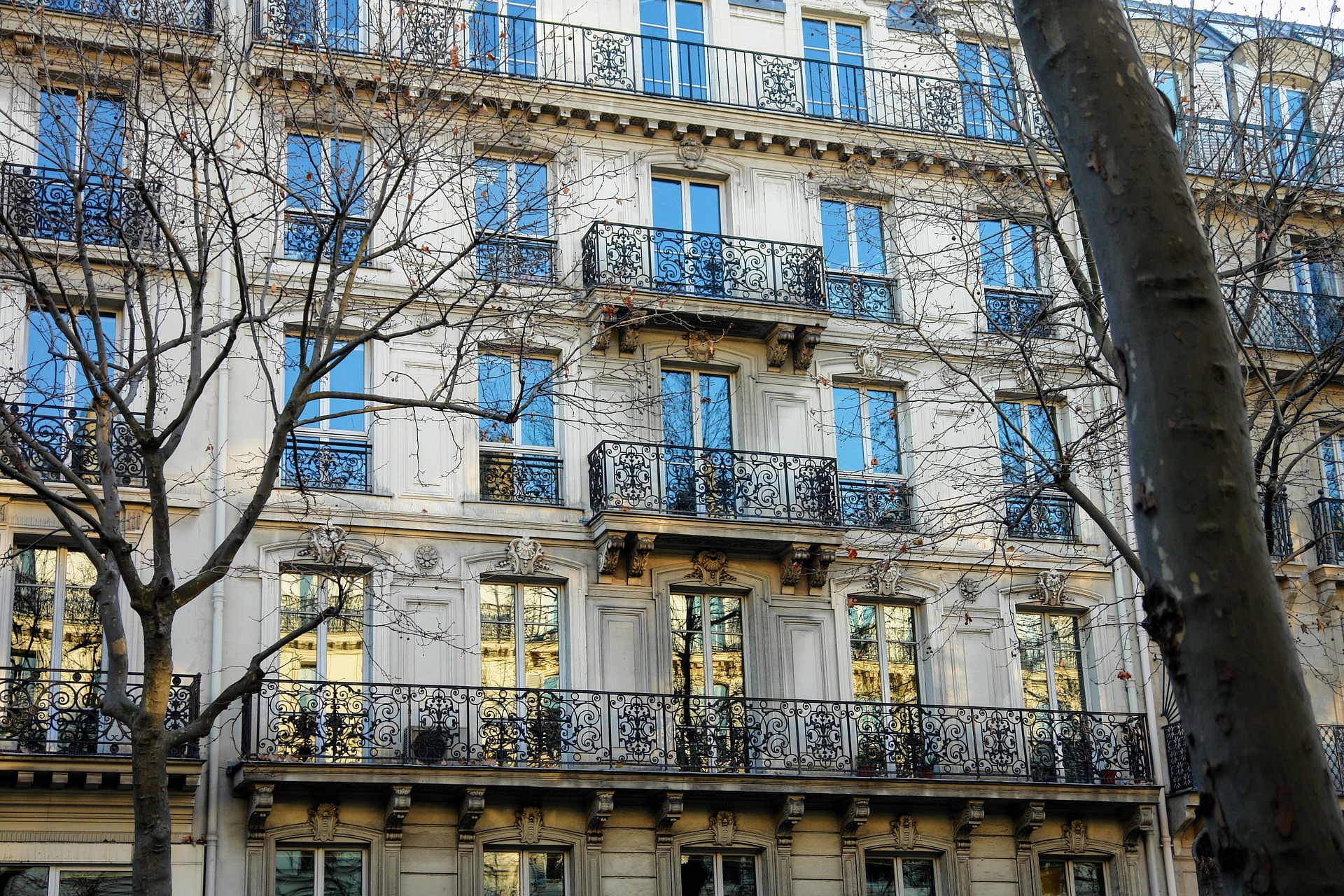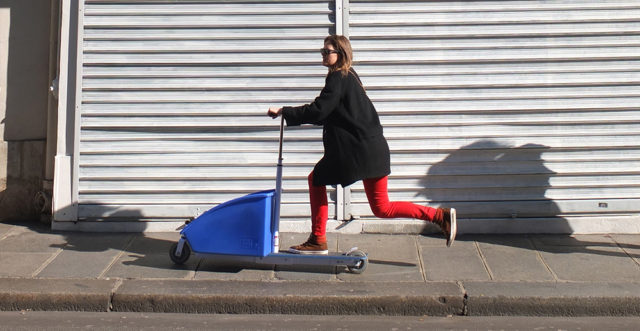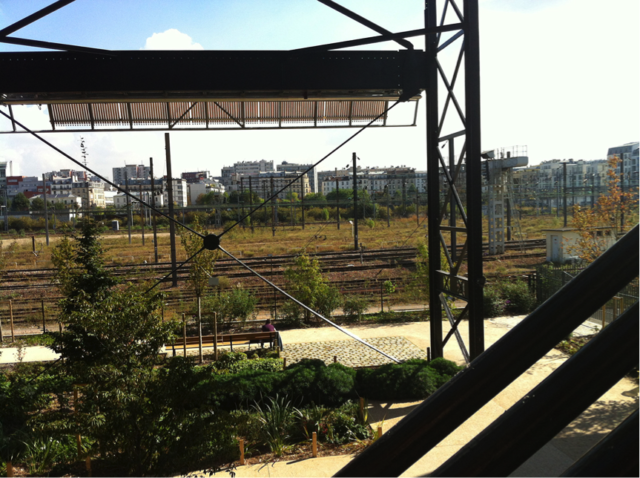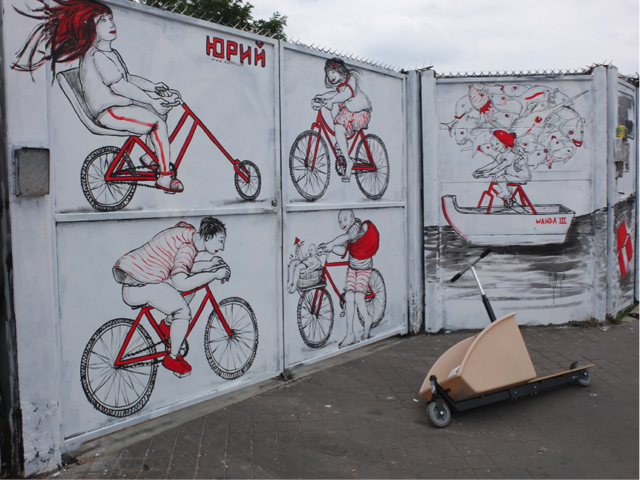
Dreaming Big and Finding Space to Create
October 15, 2014 — Blog
In the summer of 2011, after graduating from the industrial design program at California State University Long Beach, I moved to Paris in order to reconnect with my family, French culture and food. I started looking for jobs, industrial design networking events, and opportunities to meet people with similar career paths.

I was particularly keen to check out entrepreneurship events in Paris, as I was in the process of launching a product with my partners in California – the Nimble Cargo Scooter. I discovered these kinds of events were scarce in Paris. Those I could find were oriented towards tech startups, developers and interaction designers. Few were geared towards industrial designers. I soon came to realize that the Parisian industrial design scene was miles apart from its equivalent in California. After going to a few design shows and exhibits, my conclusion was that the topics and objects were often focused on small, limited productions, experiments on material and theories on aesthetics. I call it “froufrou” design – design which can be very beautiful but isn’t necessarily practical. It’s design that will clutter my tiny apartment and cost a month’s rent. I went to StartinParis twice and listened to about a dozen pitches on digital services and app ideas. Not one actual, innovative, physical product idea. In March 2014, when I presented our Nimble Scooters startup at Joshfire’s ParisIdeas, I was once again the only entrepreneur with a physical product idea based on a need. I felt quite out of place and coming from a very different background than the others.

Where are the people that make things with their hands and craft new design in ateliers, and where do they find the space to bring their ideas to life? In places like California, a Nimble Scooter will most likely not bring about any spatial or storage difficulties. The scooter is compact, less than half the size of a cargo-bicycle, and only weighs 13kg. But in Paris, I’ve had to store 2-3 pre-production prototypes in my apartment (thank you to my flatmates for withstanding the scooter invasion). The living room simply wasn’t large enough to accommodate them all long term. They did come in handy – I used one for a party to store ice and to keep beers cold, and used it again to transport all the empty bottles to the nearby recycling bin. In any case, the scooters all found homes, but not without some transportation issues. Whilst in the United States, personal vehicles are common, in central Paris only 42% of residents own a car and 58% in the “Small Crown” of Ile de France. I can’t imagine trying to launch a project like Nimble from scratch in Paris, with the major obstacle of lack of space to create and store prototypes or even gather material. From the issue of simply storing the Nimble Scooters around Paris stemmed my internal conversation on a larger problem.
Is Your m² Influencing Your Entrepreneurial Flair?

Where do designers and entrepreneurs find space to build their prototypes or make things for themselves? Welding, cutting wood, sanding, 3D printing: it’s a loud, expensive and messy process that requires space. In Paris you’d have your neighbors up in arms if you decided to build a machine in the living room, vacuumed late every night, or invested in a band saw.
Finding Space to Create
In the United States, 66% of homes have a garage, which can be used for setting up workshops, tinkering and working on hobbies. Steve Jobs and Bill Gates both started experimenting on computers in their garages and selling from their homes, two of many examples that have sparked “garage belief”, the theory that all you need is a garage and an idea (See “A Garage and an Idea” by Audia and Rider, 2005) to be successful. For our Nimble Scooter, we built a dozen prototypes in a garage before testing them out in empty parking lots. Events like Burning Man and Glow Santa Monica encourage people to think big, bring extravagant ideas to life and showcase creative inventions. There is space and room for imagination. In France, I was unable to find a decent storage space for three prototypes, and I can never find enough square meters to house my projects. Which led me to this theory: Americans create big things, because they have more space around them to dream big. In Paris, dreamers and makers are confined in such small spaces, their imagination is obstructed by visual clutter and physical limitations, and so they tend to create small things that fit.
In Paris, dreamers and makers are confined in such small spaces, their imagination is obstructed by visual clutter and physical limitations, and so they tend to create small things that fit.
Space matters. Space is necessary to build, create, experiment and test. In a home, there is dedicated space to cooking, eating and sleeping. Does your home have a dedicated space for creativity?
Dreaming Big
Since space is limited in Paris, perhaps we tend to think up “smaller” things or solutions to make our lives less cluttered. It’s understandable that entrepreneurs often find digital solutions in apps and services. They are easier and simpler to develop than a full product line. They don’t take any space, they are intangible, invisible, virtual. They fit on your phone, on the Cloud, and are shared via online social networks. They are bits, as Chris Anderson says in his book Makers. But you don’t eat bits for breakfast, do you? (check out Stephan Ango’s podcast Edgemade). We are still living in a physical world.
In the meantime, as Chris Anderson says, we are in the third industrial revolution. We are witnessing the rapid emergence of maker spaces, workshops, and fabrication labs. Production tools are becoming more accessible, processes are simplified and creativity is widely shared on the Internet, thanks to Pinterest, Etsy and maker blogs. How does this revolution affect creatives and entrepreneurs? From my personal point of view, it excites them, motivates them and encourages them to create. In addition, with the meshing of DIY and high tech, myriad possibilities have opened up for product innovation and there is a renewed desire to create physical objects.
In light of this, as Nesta’s post on Innovative Spaces mentions, “the ‘architecture of innovation’ is not itself anything new.” The recipe for innovation comes in all shapes and ingredients, and can happen anywhere – but you still need counter space. I think that if we want to, we can make Paris the springboard for a whole new array of innovations. I’d like to be part of that transforming landscape.

Alix Armour is one of five innovators selected to present at NewCities’ “Making the Future City” event on October 22, 2014 at the Autodesk Gallery pop-up in Paris